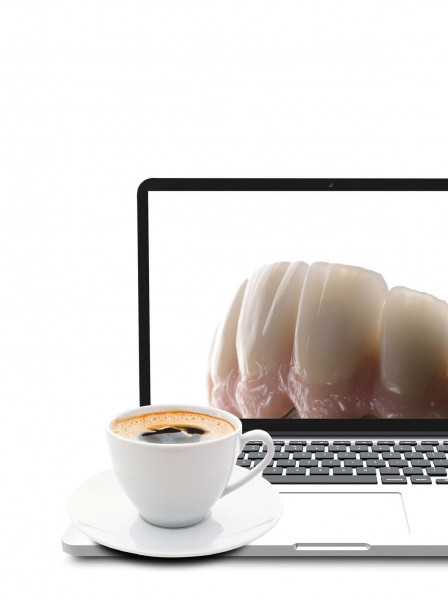EXPAND your knowledge SHARPEN your skills with MASTER CERAMIST PETER PIZZI
Virtual Study Club
With Jensen Dental’s convenient and cost-effective Virtual Study Clubs, you and your employees can engage in valuable professional learning opportunities within your own environment.
• Enjoy learning from the comforts of your laboratory or home office. Simply project the sessions on a conference room screen, and you’re ready to go!
• Forget about a plane ticket or a full tank of gas, all you need to join is a high-speed internet connection and a telephone.
• This unique format allows for training of multiple participants through live presentations allowing any number of employees to learn by ‘over-the-shoulder’ observation.
TUITION:$189
DATES:Tuesday April 12th, April 19th, April 26th & May 3rd
TIME:12PMEST - 1PMEST CE CREDITS: 5 CDT
TO REGISTER:
www.jensendental.com/virtual-study-club/
Esthetic Realities Series
Peter Pizzi, CDT, MDT
ZIRCONIA LAYERING CERAMIC STRATEGIES - VIRTUAL STUDY CLUB
Module 1:
Essentials of Zirconia Framework Design & Shading
The first step in the fabrication of restorations that are esthetic, functional and enduring begins with a properly designed and executed substructure. This has proved to be particularly true when considering a zirconia restoration. Although zirconia does not require an opaque application, the bright and highly reflective nature of the material can often present problems. These characteristics can be controlled however, with a variety of ceramic materials and application methods.
Module 2:
The Dentin Build-Up & The Role of Opacious Dentins
The dentin buildup is largely responsible for establishing the optical characteristics of the finished restoration. Although called the “dentin” layer, opacious dentins, shoulder powders, effect enamels, mamelon materials and stains are often used in conjunction with dentin materials to create this structure. The dimensions of the dentin layer are carefully constructed in consideration of the full and final form, only then can the proper dentin to enamel proportions be achieved.
Module 3:
Enamel & Translucent Materials
Enamel powders are typically differentiated by their relative translucency, light scattering capability and color influence. Many have been specifically formulated to produce an opalescence effect similar to natural teeth while others exhibit high degrees of fluorescence. Understanding the various optical properties of these enamels and how to use them is fundamental to mimicking natural teeth.
Module 4:
Contour And Surface Texture
Shape, surface texture, luster and function are the most important aspects of crown fabrication. Visual aids assure us of achieving the correct tooth form, while proper instrumentation helps us develop the minute surface details that are characteristic of natural and highly esthetic restorations.
Interested in learning more?
Call 800-243-2000
or visit www.jensendental.com/virtual- study-club/





